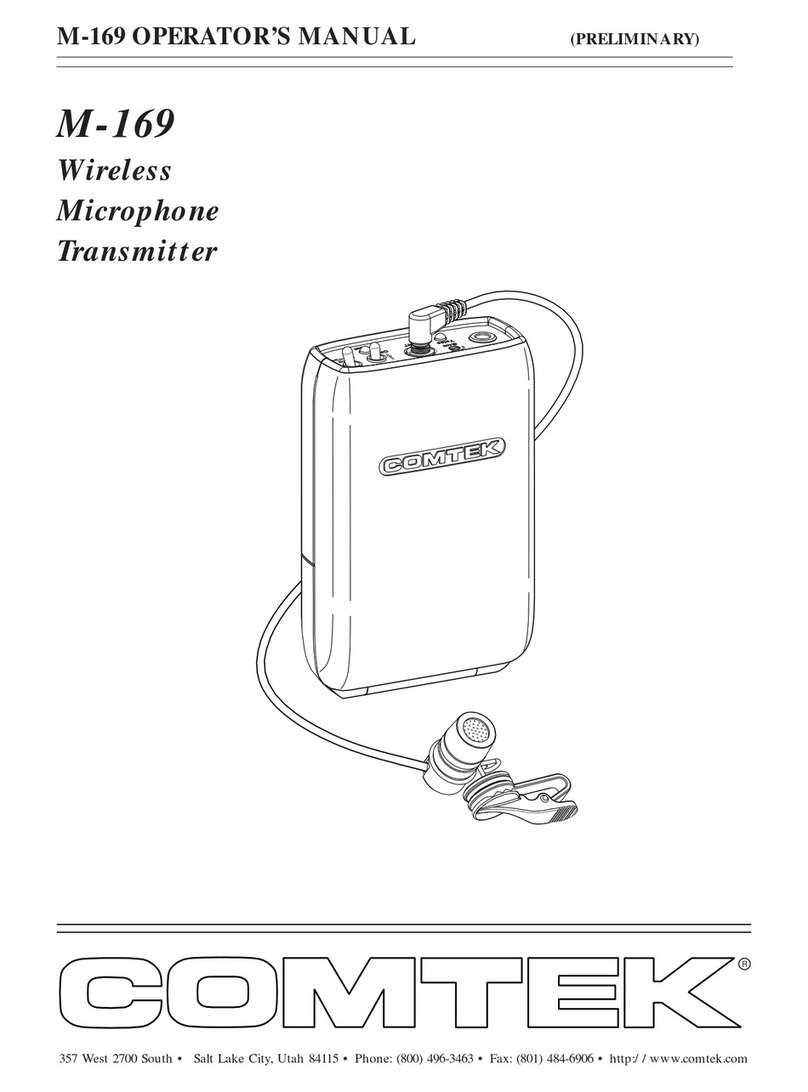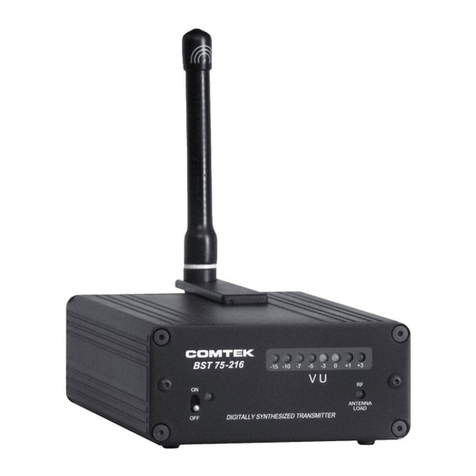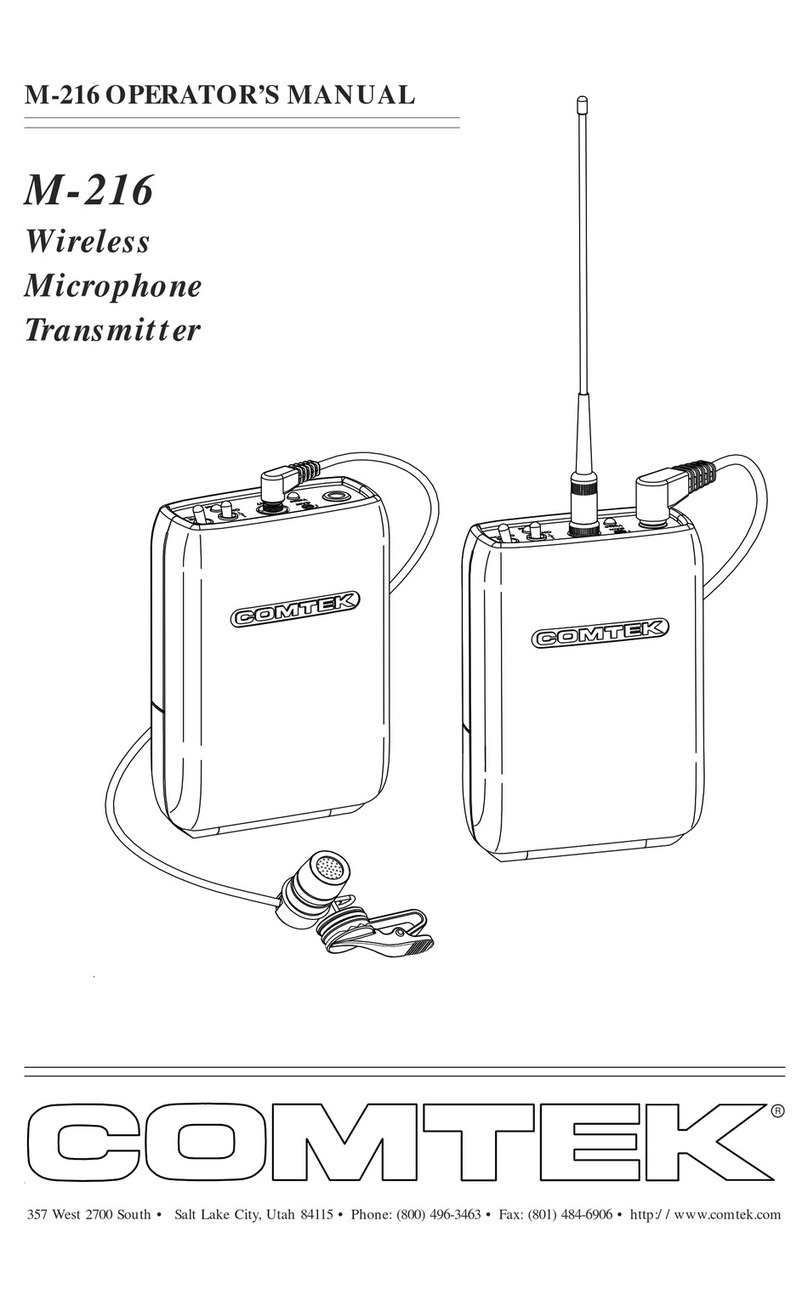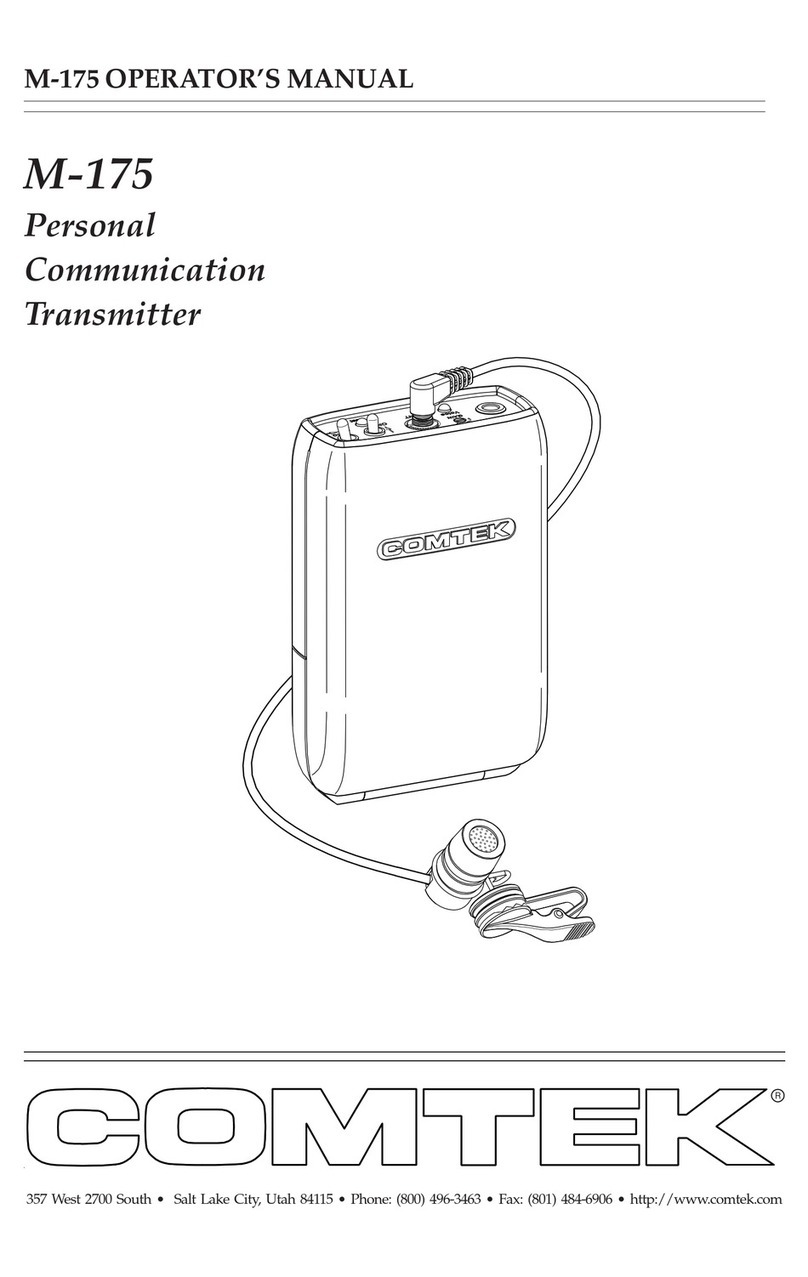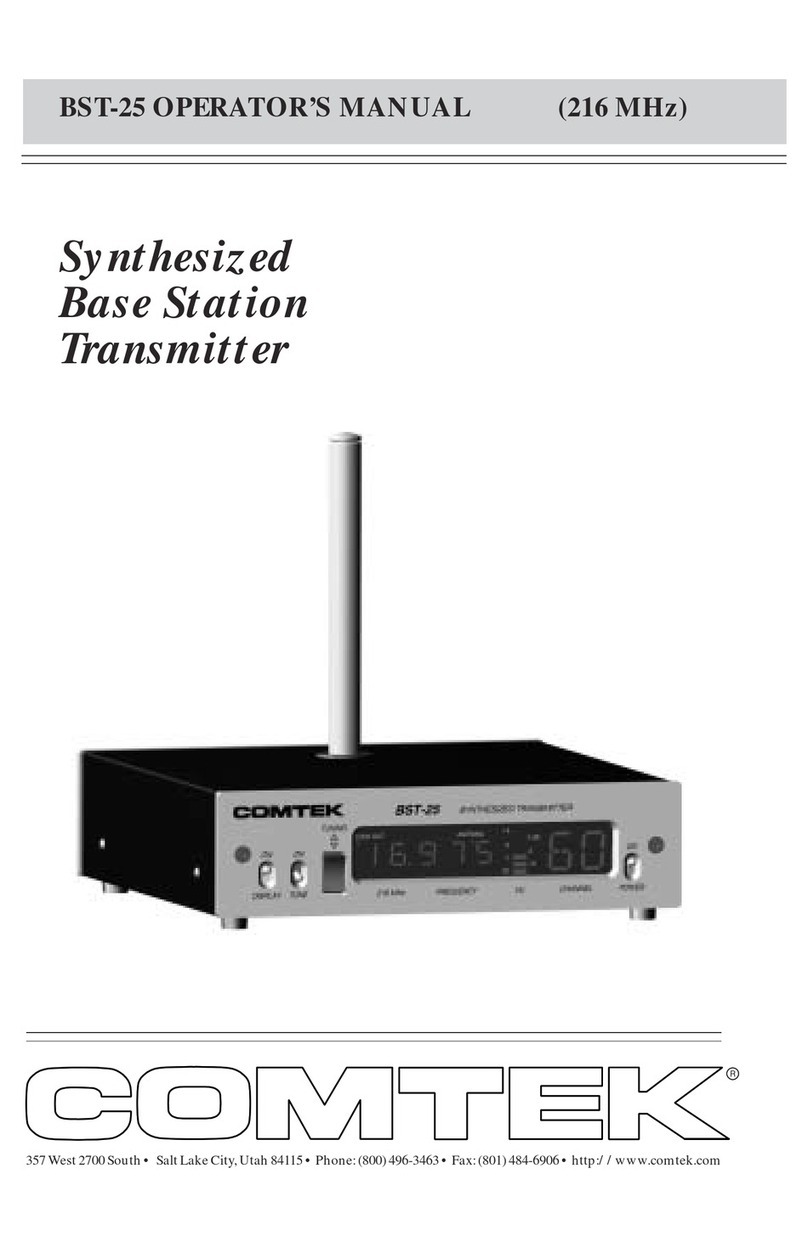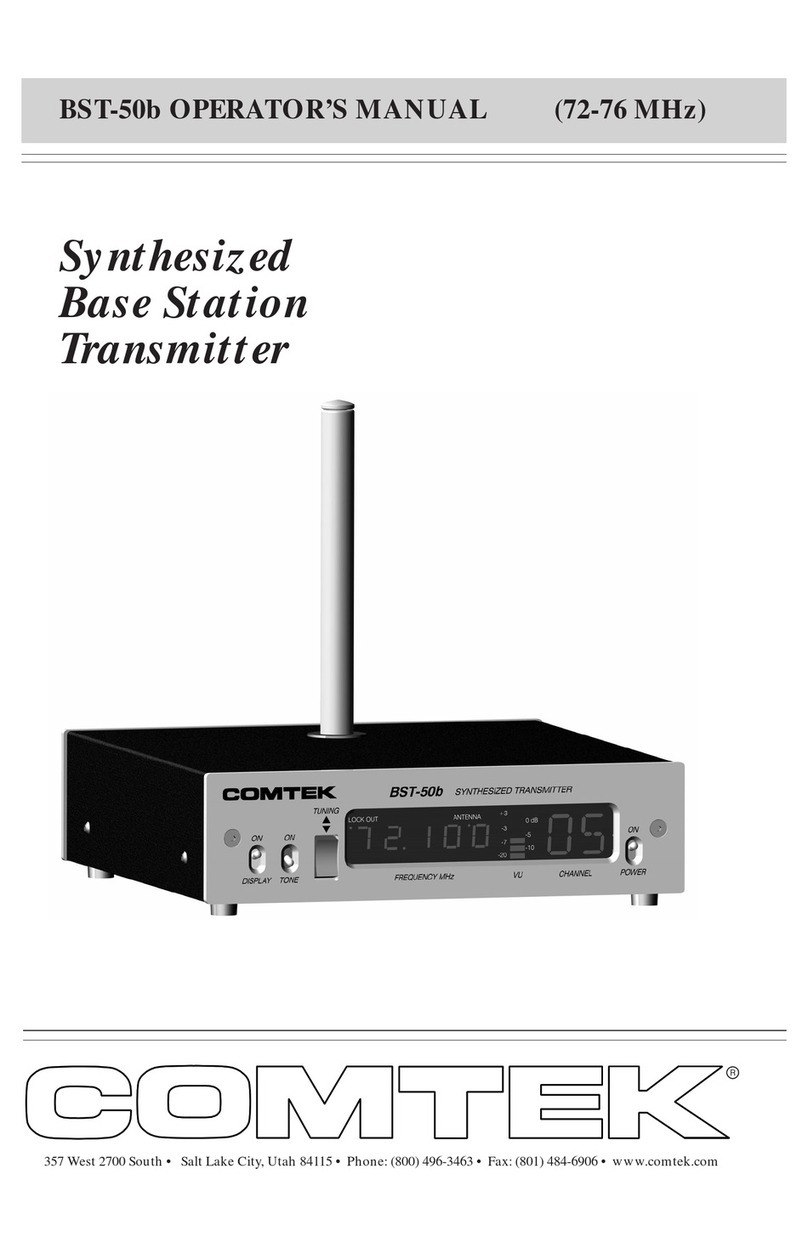Remote Antenna
When the BST-75 base station transmitter
is to be rack mounted for permanent
installation, a remote antenna must
be used. The RDA-2B remote dipole
antenna (or equivalent) or the COMTEK
“Phase Right Antenna” PRA-L72 high
performance omni antenna should be
used. These antennas must be placed
vertically polarized up to twenty feet
away from the transmitter with the
coaxial cable supplied. The highest
possible antenna placement away from
any metallic object is best. For high gain
directional yagi type antennas and
specialty antennas, contact COMTEK’s
Technical Support Services.
Integral Screw-in Whip Antenna
If the BST-75 base station transmitter is to be
used outside of the traditional rack-mounted
environment for stand-alone mobile type
applications, the screw-in whip antenna
(TWA-75) should be used. The transmitter
should be placed on a table or platform as
high as possible so the fully extended
whip antenna is at least 24” away from
any metallic object. The radiated output
power of the transmitter with this whip
antenna will not be as great as the remote
antennas. The BST-75 transmitter should
only be used in the high power setting when
the telescoping whip antenna is used.
Page 3
OPERATING INSTRUCTIONS






